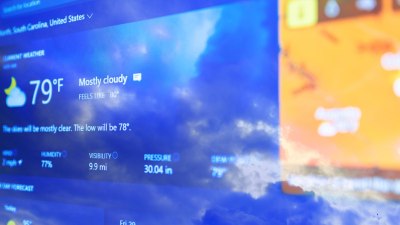How Forecasting Accuracy Has Improved in the Last Decade
Explore the advancements and factors contributing to improved forecasting accuracy over the past decade across industries.

Image by user22460925 on Freepik
Forecasting plays an essential role across numerous sectors, including finance, meteorology, supply chain management, and economics. Over the past decade, advances in technology, data availability, and analytical methods have markedly improved forecasting accuracy, enhancing decision-making processes in both business and academia. This article explores the key drivers behind this progress, spanning innovations in machine learning, data collection, and computational power that have transformed forecasting methodologies.
Introduction to Forecasting and Its Importance
Forecasting involves predicting future events based on historical and current data. Reliable forecasts enable businesses and governments to mitigate risks, allocate resources efficiently, and capitalize on emerging opportunities. Despite its fundamental role, achieving high accuracy in forecasting has traditionally been challenging due to uncertainties intrinsic to dynamic systems.
Over the last decade, however, many industries have witnessed substantial improvements. This can be attributed to breakthroughs in digital infrastructure, increased computational capacity, and a better understanding of complex models. The following sections detail key changes and technological leaps that have supported this evolution.
Advances in Data Collection and Quality
One of the critical factors enhancing forecasting accuracy is the exponential growth in the volume and quality of available data. The proliferation of the Internet of Things (IoT), mobile devices, and sensor networks has resulted in massive real-time datasets across sectors.
For example, in meteorology, sophisticated satellite technology now provides more granular atmospheric data, enhancing weather models significantly. Similarly, financial markets benefit from real-time streaming data on trades and market sentiments, allowing forecasters to incorporate timely information.
Moreover, efforts around data cleaning, integration, and standardization have improved, ensuring that models utilize accurate, consistent inputs. High-quality, comprehensive datasets reduce noise and uncertainty inherent in forecasting exercises.
Machine Learning and Artificial Intelligence Revolution
The past decade has been transformative because of the integration of machine learning (ML) and artificial intelligence (AI) in forecasting practices. Unlike traditional statistical models that rely heavily on predefined relationships, ML algorithms can automatically detect complex patterns and nonlinear interactions from vast datasets.
Algorithms such as random forests, gradient boosting, support vector machines, and deep neural networks have become commonplace in predictive analytics. For instance, deep learning methods enable the modeling of intricate dependencies in time series data, often yielding more accurate and robust forecasts than classical approaches.
Additionally, reinforcement learning techniques allow models to adapt dynamically as new data becomes available, preventing degradation in performance over time. The ability to combine multiple data sources and self-improve makes AI-driven forecasting systems highly effective.
Cloud Computing and Increased Computational Power
Huge computational requirements once limited the widespread adoption of advanced forecasting models. The last decade has seen a paradigm shift with the advent of cloud computing platforms and leaps in hardware capability.
Forecasters can now harness scalable, distributed processing power on demand to run complex simulations, train machine learning models, and handle big data analytics. This has opened avenues for ensemble forecasting, where multiple models are combined to mitigate individual weaknesses and enhance overall accuracy.
Moreover, latency has been reduced significantly, allowing near real-time forecasting updates, critical for domains like financial trading or emergency response.
Enhanced Model Sophistication and Hybrid Approaches
Forecasting models have grown more sophisticated, incorporating hybrid methodologies that combine the strengths of various techniques. Traditional time series methods, such as ARIMA or exponential smoothing, are often fused with machine learning approaches to capitalize on both interpretability and prediction power.
In economic forecasting, for example, hybrid models integrate macroeconomic indicators with sentiment analysis derived from news and social media. This layering of information refines model precision beyond what is achievable using singular data sources or methods.
Furthermore, probabilistic forecasting has gained traction, offering not only point estimates but also confidence intervals and uncertainty assessments that better inform risk-aware decisions.
Role of Big Data Analytics and Real-Time Processing
Big data analytics has become a cornerstone in advancing forecasting accuracy by enabling the extraction of insights from vast, heterogeneous information sources. Real-time data processing technologies allow for the continuous updating and refinement of forecasts.
In retail supply chains, for instance, leveraging point-of-sale data alongside social media trends and weather information allows companies to predict demand more precisely. This dynamic forecasting capability helps manage inventory more effectively and reduces both shortages and excess stock.
Advances in streaming analytics also support anomaly detection and rapid recalibration of models, ensuring forecasts remain reliable in volatile environments.
Collaborative and Open Science Efforts
The last decade has seen a growing movement towards collaboration, data sharing, and open science, which collectively foster rapid innovations in forecasting techniques. Open datasets, shared code repositories, and community challenges have accelerated method development and benchmarking.
Platforms such as Kaggle and initiatives like the Global Energy Forecasting Competition enable experts worldwide to contribute novel models and compare performance transparently. This democratic access to resources ensures improvements benefit from a wide pool of expertise and diverse perspectives.
Consequently, best practices propagate quickly and less effective methods phase out, promoting continuous enhancement in forecasting accuracy across fields.
Case Studies Highlighting Significant Improvements
Meteorology: Weather forecasting accuracy has improved dramatically with the adoption of advanced numerical models, assimilation of high-resolution satellite data, and machine learning methods. The prediction horizon for reliable daily weather forecasts has extended from about three days a decade ago to up to seven days today, markedly improving preparedness for natural disasters.
Finance: Algorithmic trading strategies based on deep learning have enhanced short-term price movement predictions. Incorporation of alternative data sources such as sentiment from news and earnings reports improves forecasts, resulting in better portfolio optimization and risk management.
Supply Chain: The integration of IoT sensors, AI-powered demand forecasting, and real-time analytics has minimized costly forecasting errors. Retailers now anticipate consumer buying patterns with greater accuracy, optimizing stock levels amid rapidly changing market conditions.
Challenges That Persist Despite Advances
Despite remarkable progress, forecasting remains inherently uncertain due to volatility, unforeseen events, and structural model limitations. Some sectors grapple with sparse or low-quality data or difficulties in modeling complex human behaviors and external shocks.
Model overfitting, interpretability issues, and the risk of reliance on black-box AI systems also present challenges. Continuous efforts in model validation, transparency, and integration of domain expertise are necessary to maintain and further improve the reliability of forecasts.
Future Outlook: Emerging Technologies and Trends
Looking ahead, several emerging technologies promise to push forecasting accuracy even further. Quantum computing may enable processing of extraordinarily complex models at speeds unattainable with classical computers. Advances in causal inference and explainable AI will improve understanding of underlying drivers, enhancing trust and actionability.
The advent of 5G and enhanced IoT ecosystems will expand real-time data sources, while reinforcement learning and continual learning models will adaptively fine-tune forecasts in evolving conditions. Collaborative ecosystems combining human judgment with machine intelligence will likely become standard practice to address nuances that purely automated systems cannot capture.
Increased emphasis on ethical AI and data privacy will shape how data is leveraged for predictive purposes, underscoring the balance between accuracy improvements and responsible usage.











